Burt Rutan - Aircraft Genius
Originating at the beginning of the twentieth century, aviation immediately became the subject of lively public interest. Each of the vehicles heavier than air was still a shocking curiosity, so the names of their designers - the Wright brothers, Bleriot, Farman, Curtiss, the Short brothers - were known throughout Western civilization, as well as the names of famous pilots.
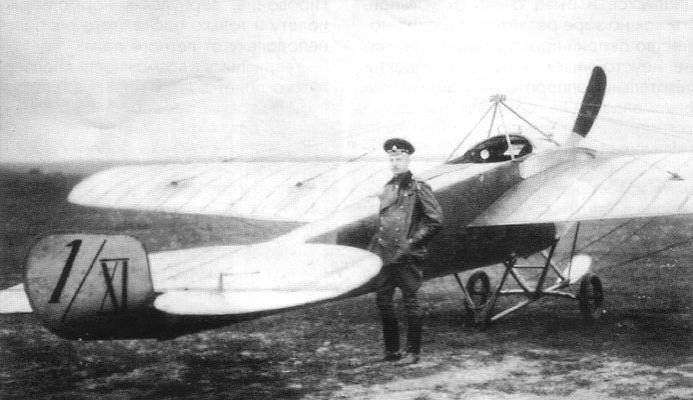
Then the fact of the existence of airplanes became more accustomed, and the only heroes left were the pilots, who conquered the imagination with long-distance flights or inconceivable aerobatics. For example, we all know the Russian pilot Nesterov; but how many people will say on which plane, which designer, did he execute his famous loop?
World War I put the plane on a par with other mass creatures of technical progress. New designs and achievements of aviation left the front pages of newspapers, becoming only the subject of interest of specialists - and those for whom it became a hobby. From time to time, some events became a worldwide sensation - as was the case with the first solo flight over the Atlantic Ocean or the first non-stop flight from the USSR to the USA via the North Pole. And again: a lot of cultured people today remember that these are the accomplishments of Charles Lindberg and Valery Chkalov with his comrades. But who knows that the trans-Atlantic "Spirit of St. Louis" was made by the company "Ryan", and the development of the Chkalov ANT-25 in the Tupolev Design Bureau was headed by Pavel Osipovich Sukhoi?
Now the names of outstanding aircraft designers of the past are known only to the extent that they are perpetuated in the names of the companies they have created - those that continue to exist today, swallowing up their less happy competitors. The creation of a modern aircraft is a canonical example of the collective labor of hundreds and thousands of people; no one would ever wonder to be interested in their last names.
But there is one exception. His name is Bert Rutan, and this name is only slightly inferior in popularity to the names of megastars of show business and sport, the main political leaders and fashion designers.
Rutan became world-famous in 1986, when on the aircraft of his Voyager design for the first time stories a nonstop flight around the globe was made - the length of the route really slightly exceeded the length of the equator of our planet. And what's interesting is that there has not been for many decades: the name of the designer is known more widely than the names of the pilots of this record flight.
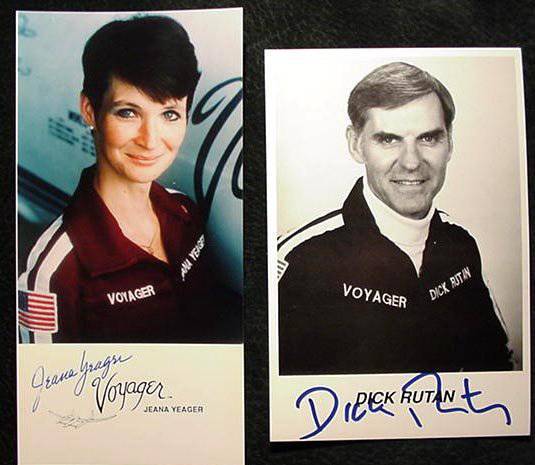
Why is that? Why did they remember Lindberg from 1920, not Ryan, and now Bert is more famous than his brother Dick and Gina Yeeger, who drove Voyager for more than nine days on record flight, and Michael Milville, who won the X-prize at Rutanovsky? Space Sheep-1?
Yes, Albert "Bert" Rutan became world famous after the Around the World "Voyager". But experts, aviation “fans” and the widest circles of the “near-aviation” public knew and appreciated it before.
Santos-Dumont and the Voisin brothers were easy to surprise contemporaries with their airplanes - there was simply nothing to compare them with, there was still no “classic”, familiar look and feel of the aircraft. Any soaring structure made the strongest impression by the fact of movement by air. Not so now: any man in the street knows what an airplane should look like, whether it be a passenger liner, a fighter or a light-engine vehicle for tourists and forest patrols. And any engineer knows what it should be made of.
However, Rutan’s aircraft always, starting from the very first, obviously differed from the overwhelming majority of existing structures, and the degree of this difference ranges from “seriously” to “dramatically”. Their unprecedented originality is due to a combination of two features: what the plane is made of and how it is made. That is: the main structural material and aerodynamic design.
Bert Rutan builds all his planes, except the very first ones, and even the spacecraft builds almost entirely from composite materials; and often these materials alone make it possible to implement the conceived aerodynamic scheme. And the schemes of the Rutan aircraft are the most exotic.
Its first development was the “Vari-Wiggen”, built by 1972, and that year the next famous designer left the United States Air Force, where he worked as a civil engineer in flight tests at Edwards airbase. The word "Wiggen" in the name of the car appeared thanks to the Swedish fighter SAAB J-37 "Wiggen", which had a rare at that time scheme "duck" - when the horizontal tail is located not behind the wing, but in front of it. Such a scheme has its own problems, so Rutan decided from the very beginning that he would gradually work out the structure, changing the geometric parameters of the wing and tail unit. Hence the prefix "Vari" in the name of the aircraft.
Skeptics did not believe in success, but already then the exceptional technical flair of the young designer was manifested: after several trial options, an excellent two-seater sports aircraft turned out. Its construction was still wooden; it had a delta wing, a pushing screw, weighed 770 kg and with an 150 horsepower engine. developed speed 262 km / h. From 1976, it began to be sold as a set of parts and accessories for home construction, and by the middle of the 1980-s about 900 of such sets were sold. Some of the built aircraft fly so far ...
After leaving the Air Force, Albert worked for two years at the company that produced the tiny Bede-5J jet airplane at the time, also in the form of a set of parts, and also had great commercial success. This plane was called the “pocket rocket” - “pocket rocket” - and in 1983, it became famous in the next James Bond movie.
The moment came when Rutan came to the conclusion that the creation of his own company for such activities was timely. RAF was founded in 1974. RAF is Rutan Aircraft Factory, located on the territory of Mojave Airport, California. There is a respectable pun in the name of the company, because another reading of the abbreviation - Royal Air Fleet, the Royal Air Force of the United Kingdom of Great Britain and Northern Ireland is a better known one.
The development of the Vari-Wiggen was the Vari-Ize (Vari-EZ), also designed from wood and foam. Probably, at this time, those who were aware of, began to realize that they were observing the beginning of the work of an outstanding creator. The plane, which took off in May 1975, had a very special configuration. The wing with a small sweep ended vertically raised tips, which were located on the rudders. (Subsequently, such linings appeared in jet liners, for example, in Il-96 and Tu-204 - they significantly increase the aerodynamic characteristics of the wing; they were known for a long time, but it was Rutan who remembered them).
The front horizontal tail was carrying, that is, not only balanced the plane, but also created a lifting force. The engine with the pusher propeller (a modified Volkswagen car) had the power of a 62 hp, while the three-support chassis had a nose strut in order to make it easier for the pilot to climb into the cabin.
However, one should not think that Rutan was striving for originality for its own sake. All these “delights” made the “Vari-Ize” a record airplane: it showed on the closed route the flight range of 2621 km, which was the highest global achievement for cars with a take-off weight of up to 500 kg. Later on, the engine was installed in the 100 hp, and the homemade aviators by 1985 collected more than 400 of such machines from the purchased sets, making Vari-Ize one of the most popular amateur aircraft.
And in 1979, the Long-EZ (Long-EZ) appeared, an increased modification with a lower sweep wing and already an aircraft engine “Lycoming” in the 115 hp. The plane was specially designed for the most economical flights over long ranges, it could stay in the air for more than ten hours, passing a distance over 2,5 thousand km by 200 liters of gasoline. If instead of the seat of the second crew member an additional fuel tank was installed, then the flight range increased to a very dizzying figure: 7700 km! And this is a little bit over 5 m long!
Of course, this was not without a record - more than 6440 km in flight in a straight line. The smaller range in the record in comparison with the maximum with an additional tank is probably explained by the fact that the amount of fuel filled in the record flight was limited so as not to go beyond the weight category.
At the same time, the plane was not some slow-speed motor-glider, where everything was sacrificed to a range. Its maximum speed exceeded 350 km / h, and normal cruising - about 300 km / h. It’s hard to keep from comparing, although not quite correct: in the middle of 1930-s, the training plane UTI-2 of the Yakovlev design, also double and with an engine of the same power, could develop only about 200 km / h and was considered fast enough that fighter pilots trained on it. Of course, nothing of the kind in terms of range and speech could not be.
Long-Ize also sold very well: at the end of 2005, only 700 of such aircraft were registered in the USA only. But with the other machine of the same period it turned out worse. 5-local small passenger "Defiant", similar to "Long-Ize", but larger than it, was scheduled for release on the assembly line, but really had a demand only in the form of sets of drawings, which were sold approximately 200.
The logical continuation of this line was the 10-seat (plus pilot) administrative aircraft Model 2000 "Starship-1". Rutan designed this mini-airliner while working for Beach Ercraft, a well-known manufacturer of personal and business jets and cars for local airlines. The power elements of this aircraft were made of graphite-epoxy composite materials.
Here it is necessary to make a small introduction. Understanding the potential of new non-metallic materials, Rutan transformed his RAF into a firm that now became known around the world — Scaled Composites, where Scaled means Scaled Composites, the Advanced Link to Efficient Development. In 1982, Scaled Composites was purchased by Beach, and until 1985 was in its composition, and Bert worked for the Beach research department. Now "Scaled" belongs to Rutan and several other shareholders.
StarShip-1 for the first time took off 15 February 1986 year, in 1988-m it received a basic certificate of airworthiness, and in April 1989 was lifted into the air first production machine.
The plane basically repeated the scheme “Vari” - and “Long-Ize”, but it already weighed 6530 kg. Two turboprop engine 1200 hp with five-blade pushing screws mounted on the rear edge of the wing close to the fuselage. It flies almost as fast as similar jet machines — the cruising speed of 620 km / h (faster than any twin-engined bomber from World War II with much more powerful engines); flight range is 3132 km.
However, not even geniuses succeed. "Starship" was difficult to manage and expensive to operate. Of the 53 built copies, only a few cars were sold, and around 2003, the company closed the project.
The company "Scaled Composites" was created specifically for the study of unconventional aerodynamic schemes embodied in the aircraft from the latest non-metallic materials. This is what she is doing to this day, however, now extending her activity to outer space.
Each of the designs of Bert Rutan deserves a detailed description, they are surprisingly diverse, and this diversity in each case has a specific goal. On the instructions of the Beach Company, which was looking for options to replace its Bonanza bestseller, Rutan built the Catbird concept aircraft - a five-seater, piston, fully composite, and, of course, unusual. The aircraft had three pairs of bearing surfaces: the main wing, the front wings and the carrying tail. The perfection of this car in the 1988 year was confirmed by winning the CAFE 400 California race, where overall performance is measured by an integral indicator that includes fuel consumption, speed and payload.
Also for the "Beach" was built triplane "Triumph" - a reduced model of the future business aircraft with two jet engines. At the request of a private individual, Rutan made a small two-girder plane with a pulling and pushing screw; in 1983, the plane was destroyed as a result of the accident, but the pilot remained intact, as the cabin was designed to withstand shocks with 22-multiple overload.
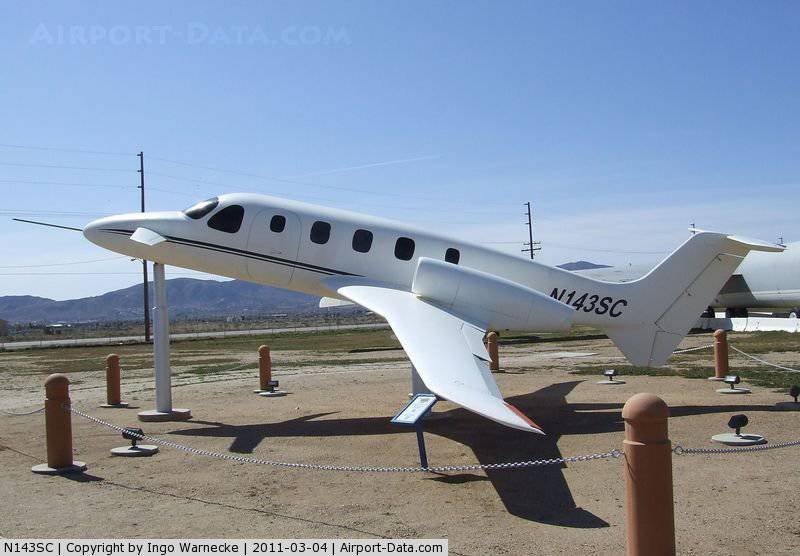
It must be said that the author of extraordinary designs has his own, very peculiar, views on the future of civil aviation. More precisely, air transport and its role in the lives of ordinary people.
He reasons like this - for clarity, apply familiar domestic names, in fact it does not change. If you want to get from Rylsk, in the Kursk region, in Klin by plane, then you will have to get to Kursk, from there take the Tu-134 or Boeing 737, and from Moscow by land transport to Klin. It is through the air; and on the ground you have to go, say, by bus to the same Kursk, by train - to Moscow, and then by train to Klin. Why is it if you have a car? You just sit in it and drive from Rylsk to Klin on the best route.
So, Rutan says, the plane should be for a person, for the family what the car is now. And this will happen not sometime in the distant future, but already years through 15 – 25.
It is clear that this requires an accessible and understandable navigation system so as not to get lost in flight. And, of course, exceptionally reliable, very simple to operate aircraft, cheap to operate and - important! - as safe as possible in emergency situations.
With navigation now getting better - the receivers of satellite systems are compact, their use is becoming more and more routine. And the creation of such an aircraft is largely devoted to the work of Albert Rutan.
Exploring the issues of improving security, the designer in the 1993 year built the "Boomerang" - a twin-engine aircraft for one pilot and five passengers. Twin-engine is understandable, two engines are more reliable than one. Difficulties come when one of them fails: a plane can fly, but to control it in such a situation, you need the experience of a professional or an athlete. Where did he come from tens of millions of mere mortals? It was in “Boomerang” that Rutan tried to solve this problem - so that the failure of one of the two engines did not lead to a dangerous complication of piloting technology.
The car turned out to be completely “Rutanovskaya”, and even more: a completely asymmetric fuselage with one of the engines is located to the right of the middle of the wing, to the left of it the second engine nacelle extended to the tail until plumage. Two keels, one on the fuselage, the second on an elongated nacelle; its tail tip is connected to the fuselage by horizontal tail, also asymmetrical.
I know of only one flying similar construction - the experimental reconnaissance Bv 141, built by Blomm und Foss in Germany during World War II. In addition, the fuselage was also located not along the axis of symmetry, the only motor separately located on the longer part of the wing, and the tail horizontal tail had only one half-plane ... However, the work of German aircraft designers and scientists at the end of 1930-x - the first half of 1940-x is also a very special page in the history of world aviation.
As always with Rutan, the result was consistent with the calculations: stopping one of the engines did not require the pilot to ANY ADDITIONAL ACTIONS, the control technique remained the same, even if the failure occurred at low speed. The flight characteristics were also at altitude: with a load of 450 kg, the aircraft developed 530 km / h (with the total power of two engines of the entire 410 hp) and could fly 3780 km.
In general, "Scaled Composites" is the most productive company in the world in terms of the development and construction of experimental and research aircraft. The customers are the largest firms and scientific organizations, the work is carried out in the interests of the most important programs. For example, for the program of the famous stealth bomber B-2, its scale model was made in 40% of its actual size. There were missiles, unmanned aerial vehicles, and space development in the interests of NASA, and even an 40-meter wind turbine.
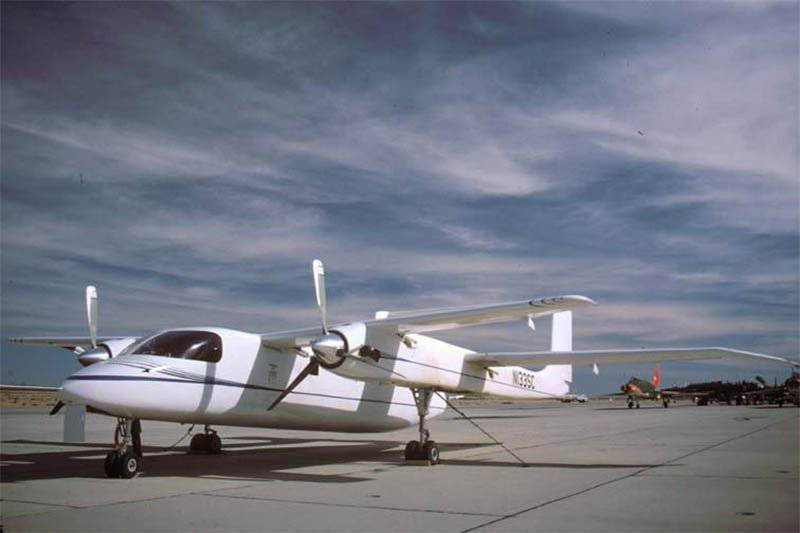
A very interesting aircraft was created as part of the ATTT program. Under the auspices of DARPA, a state agency for advanced military development, the concept of a new generation transport aircraft with short takeoff and landing was investigated. Rutan, as usual, suggested an unusual scheme: two tandemly arranged wings connected by long engine nacelles, the rear wing being the main one and having a greater length than the front one. The tail plumage was made T-shaped. In accordance with the contract, an experienced aircraft of reduced size (62% of the design value) was built and tested. He made his first 29 flight on December 1987 of the year, and his unusual aerodynamic layout provided him with excellent characteristics of shortened take-off and landing - and that was the task.
Among the samples of products "Scaled Composites" there is a real combat aircraft. Rate it very much futuristic design can those who have seen the movie "Aces. Iron Eagle-III ”- the main villain flies on it. Rutan built it on his own initiative, after participating in the 1980-ies as a consultant in a search program to create a light aircraft to fight combat helicopters and directly support troops on the battlefield. Then this program has not received development, but interest in such machines continues to exist.
A single-engine, single-seat attack aircraft ARES (ARES) is more than 50% made of composite materials. The aerodynamic scheme is “duck”, the rear wing has a double regular sweep, the front horizontal tail is negative. Two sickle-shaped keels are mounted on thin beams protruding beyond the rear edge of the wing.
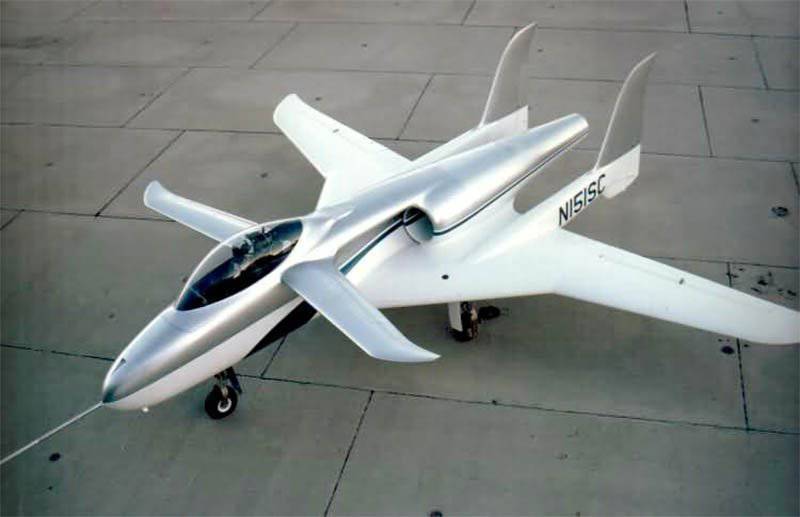
The intention to install the GAU-25 / U 12-millimeter cannon with a rotating block of five barrels had the greatest influence on the formation of the aircraft's appearance. This gun (called the "Equalizer") was created specifically for the AV-8B Harrier 2. For her was provided for solid ammunition: 220 shells. For comparison, two 30-mm guns of the MiG-19 interceptor, weighing three times more than ARES, had 70 projectiles per barrel. The gun was mounted on the right side of the fuselage. The machine is light, the gun is powerful, with strong recoil ... To eliminate the yaw on the course when firing, the fuselage had to be moved to 76 cm from the middle of the wing. Asymmetry again, but that's not all.
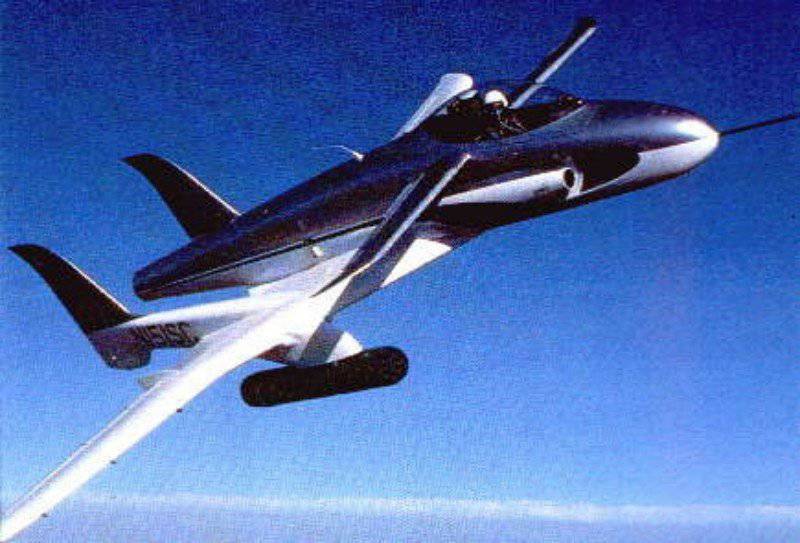
The gun, along with the ammunition took a very large part of the fuselage; where to put the engine? It was placed to the left of the gun at an angle to the longitudinal axis of the aircraft, the air intake was taken out to the left side, and the exit system of the gases was curved to normalize the thrust vector direction. An additional advantage: the gun on the right, the air intake on the left, - the powder gases do not enter the engine, which could lead to its unstable operation and even stopping.
This is the layout - as if no one in the world had ever dealt with combat aircraft, as if it had not been acquired over nearly a century of classical schemes, proven by thousands of copies. Who, except Bert Rutan, could conceive and realize such a thing?
The plane made the first flight in February 1990 of the year, and in 1993-m was shot in an action movie. However, one should not think that this is just a kind of adaptation for cinematic stunts. This is a real combat vehicle: in addition to the cannon, air-to-ground and air-to-air missiles can be hung on it, there is a compartment for reconnaissance equipment, and the cockpit protected by Kevlar armor has an ejected pilot's seat and boost to protect it from weapons mass destruction.
With a 1340 kg turbofan engine with a weight of 2,8 tons, it has a maximum ground speed of 650 km / h, which is more than enough to fight tanks and helicopters; at altitude, its speed is greater, 750 km / h. But its main flying advantage is its amazing, incomparable maneuverability. Turning speed with full combat equipment is 36 degrees per second - like the most maneuverable biplane fighters of the late 1930s! A massive American F-16C fighter designed specifically for short-range air combat is capable of only 10,6 degrees per second ...
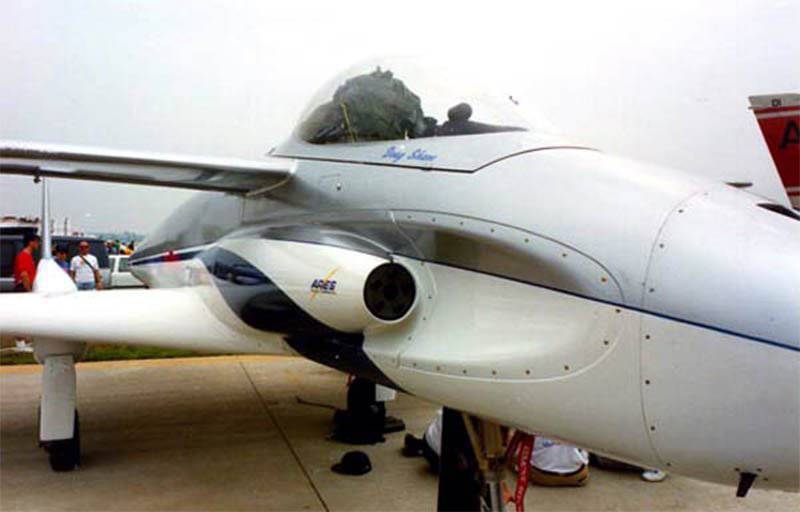
The prospects for acquiring ARES for the United States Air Force are unclear, but it may well be bought by developing countries that “cannot afford” to acquire classic modern combat aircraft. The cost of this attack aircraft in mass production should be, depending on the configuration, 1 – 2 million dollars, which is very inexpensive for today.
Many, many samples of flying technology created an outstanding aircraft designer of our time, the only of its kind Albert "Bert" Rutan. Samples, the exceptional novelty of which has always been a means to solve specific and very difficult problems of the leading edge of aerospace science and technology. The list of his awards and degrees in numerous institutes and universities is great, and the latter were awarded to him, as a rule, by “gonoris kausa” - in terms of the totality of achievements. He has enormous prestige and global fame in aerospace circles.
And in 1986, a qualitative transition took place - “wide popularity in narrow circles” turned into world-wide popularity. This happened due to a truly epoch-making event - the world's first non-stop round-the-world, without refueling in the air, the flight of the next brainchild of Bert Rutan - aircraft Model 76 "Voyager".
There were also cars that set records just in clear categories, as was the case with the Ize series - I wrote about this in the first part. But it was still that “wide fame in narrow circles”. And finally, it is time to do something truly great, on a global scale.
It is believed that his brother Dick, a former military pilot, asked to make a plane for flying around Rutan Land. Bert got down to business in 1982, and in June 1984-th unit first took to the air.
In the construction, everything is subordinated to one idea - to take as much fuel as possible and spend it as economically as possible. The scheme is a very long thin wing in the rear of the short fuselage, on either side of the latter - tank beams connected to each other and with the nose of the fuselage also narrow and long (10 m) with the front horizontal tail; on the keel at the ends of each of the beams. Voyager is made entirely of composite materials, which made it possible to get the weight of the airframe of the entire 426 kg - this is with the length of the fuselage 7,74 m, the beams - 8,9 m and the wingspan of the whole 33,77 m!
In the nose and tail parts of the fuselage there are two piston engines: in front, with a pulling screw, power 130 hp, and in the rear, with a pushing - 110 hp. To save fuel, the nasal engine in cruise flight, after dialing the cruise altitude, is turned off (in fact, it was done on the third day of the flight). And fuel is placed everywhere: in the wing, fuselage, side beams, even in the plumage. Its weight is 3180 kg - more than 72% of the total starting weight of the aircraft. Moreover, in flight, fuel must be pumped from one tank to another according to a certain pattern from time to time - with such a share in flight weight, its distribution along the “geometry” of the aircraft plays a crucial role in shaping the alignment of the vehicle.
The flight, which began at dawn 14 December 1986 of the year, lasted 216 hours 3 minutes 44 seconds, during which time 40 212 139 meters were traveled. From the Philippines and almost to Sri Lanka (flying to the west), pilots were accompanied by typhoons, for safety you even had to turn on the front engine. On the sixth day, when the Voyager crossed the coast of Somalia, it was announced that a new absolute record was set for the range of a non-stop flight. Above the center of the Atlantic fell into a strong air flow, which carried a light car in the direction of Brazil ...
Having overcome all difficulties, Dick Rutan and Gina Yeager of December 23 landed at the same airfield of Edwards Air Base, from which they began their journey. In the tanks remained 48 kg of fuel. They proved to be real heroes, match up to the 1920-30-x record-aviators: nine days in a cramped cockpit, fighting the elements, and, among other things, 10 kg of food and water for two for the entire flight.
Ronald Reagan awarded the brothers Rutan and Gina Yeager of the Civic Presidential Medal. Voyager now stands in the main gallery of the National Aerospace Museum of the Smithsonian Institution, next to the Wright Brothers Flyer and the Spirit of St. Louis by Charles Lindbergh.
In 2005, the Voyager record was complemented by another achievement - this time it was a round-the-world flight on a single-seat (!) Jet plane. Such a plane was ordered to Rutan by the famous extreme Steve Fossett, who was supported by the British billionaire, the head of the Virgin Empire, Richard Branson. Mr. Fossett has set over one hundred records in various risky events; so, in 2002, he single-handedly flew around the globe in a balloon. Now Fossett wanted to repeat the same, but by plane, and no more than 80 hours (this, apparently, a tribute to Jules Verne).
"Scaled Composites" worked on the machine in parallel with the preparations for the conquest of the "X-prize". Of course, the Global Flyer, the so-called new record holder, is entirely composite, and its design is even more efficient than that of the Voyager: the weight of the fuel is 82% of the total weight of the car during takeoff. The pilot is located in a small "trimmed" fuselage, the size of the cabin allows him to lie down; a turbofan engine with a 1020 kg load is mounted on the top of the rear. The plane was also built according to the two-beam scheme, but, unlike the Voyager with its front horizontal tail, the configuration is almost usual for such a scheme - each tail beam carries small keels and stabilizers with rudders, so it looks like two airplanes, “ strung "on one wing on the sides of the pilot's gondola.
The flight took place from February 28 to March 3 2005. During this time, Steve slept for only a few minutes, his satellite navigation system went out of order, there was an unplanned fuel consumption. But he did it all, and even better than he expected - the flight took only 67 hours. Well, Bert once again confirmed his unattainable design level - Global Flyer showed the 75% better fuel efficiency than any of the existing jets.
But one record attempt by Rutan still failed.
At the end of 1980, American millionaire aircraft collector Robert Pond set himself the goal of setting a new world speed record for piston airplanes. Such competitions are traditionally held in Reno, USA, and always won their cars, modified from the best fighters of the Second World War. Pond decided to try to take the record from the "veterans" and ordered the design of the applicant - of course, Bert Rutan.
In developing the Pond Racer, Bert did not repeat the perfected schemes of the Mustang or Lightning. Two highly powered Nissan car engines for the 1000 HP he installed in the fairing beams, mounted on the backward-swept wing. A small central fuselage with a cabin rested with its nose on the rear edge of the wing. The tail parts of the fuselage and the beams are connected by horizontal plumage, the keels are three - large on the fuselage and small on each beam. The composite "Pond Racer" weighed just 1880 kg, three to four times less than its "military" competitors. According to preliminary calculations, a speed of about 850 km / h was obtained.
Dick Rutan took the plane into the air on 22 in March on 1991, and in September in Reno, the Pond Racer showed on the difficult route the speed of 644 km / h. But there was a fire in the power plant (I described the reason in two words here), and the car went out of order without setting a record. And 14 September 1993, the plane was broken during a hard landing, and he drove Rick Briquett.
For justice, we note: it was a special record aircraft, designed for short-term forced flight modes and masterful piloting. The machines that Rutan designs for mass use do not break either in flight or during a rough landing.
... Did Albert Rutan do everything he wanted to do in the field of flying in the atmosphere? Hardly; Be that as it may, the first sensational achievement in the new millennium was already a space flight, but only suborbital so far. Fulfilling a set of criteria for the award of "X-prize", Rutan built the unit, which reached an altitude of 100 kilometers. But he began the path to the conquest of great heights somewhat earlier than he entered the race of commercial space explorers.
The Proteus aircraft, which made its first 26 flight on July 1998, was ordered by Angel Technology Corp.. It was intended to work as part of a cellular telephone system "with air-based elements." The task of "Proteus" was to be in the air for 14 hours at a very high altitude - in order to cover the largest possible area from there by relaying.
This assignment “Scaled Copmozits” embodied in the form of an exceptionally elegant machine, as always, of an unusual kind. In order to fly high and long (in the absence of a high speed requirement), an airplane must have a wing of large elongation — that is, long and narrow. The Proteus has two such wings: a straight front and rear, a larger sweep and curved in the frontal projection — it gently goes down from the fuselage, then rises up, and ends with the tips, bent down again. This design of the aircraft is called a biplane tandem, and the shape of the wing is the “reverse gull”. Two beams extending to the tail from the rear wing carry vertical tail from the upper and lower carinae; horizontal tail at this time is absent. Economical turbofan engines are mounted on pylons on top of the rear fuselage.
"Proteus" is very beautiful. I, unable to restrain myself, put two of his photos, and do not even cut them off, they are very good, which is not surprising, given their source.
And this time the requirements were met, as evidenced by three world records in its class, established by Proteus 25 – 27 October 2000: the maximum height 19 137 m, the height of the steady horizontal flight 18 873 m, the height of the flight with a load 1000 kg - 17 032 m.
The experience gained during the construction of the Proteus was used in the design of the White Knight, a high-altitude aircraft carrier, one of the two elements of the suborbital system that won the X-prize. The second component was actually the Space Ship One suborbital spacecraft - this “couple” was to win one of the most outstanding contests of the beginning of the 21st century.
“X-Prize” was established in 1996 year to encourage the interest of private designers and manufacturers to create devices that can deliver people outside the atmosphere. That is, to the area where previously everything was done solely on the orders of state organizations and for state money. The X-Prize Foundation was established, setting an award in 10 of millions of dollars to those who are able to fulfill the following three conditions: deliver a crew of three people to a height of at least 100 km; make a safe landing; repeat the flight on the same machine no later than two weeks. Funding could only come from private funds.
The fund includes many remarkable people, such as the first space tourist Dennis Tito and Eric Lindberg, the grandson of the famous Charles. The chief judge was the former astronaut Richard Stifoss, who made three flights into space. The deadline for the draw has been set: 2004 year.
Scaled Composites officially - after holding a press conference with three hundred journalists - joined the contest in April 2003. By this time, the composition of the participants was almost determined: 23 teams from different countries competed. All worked hard - with more or less chances of success.
But Rutan already had a serious start. His technique was already developed, the “White Knight” was tested in the air, the construction and ground tests of the Space Thorn-1 were completed. 7 August 2003 of the year was the first to take off the entire Sparky with the discharge of the space stage. At an altitude of more than 14 kilometers at a speed of 400 km / h, the suborbiter separated from the carrier and, after 19 minutes of the planned flight (without starting the engine), made a safe landing.
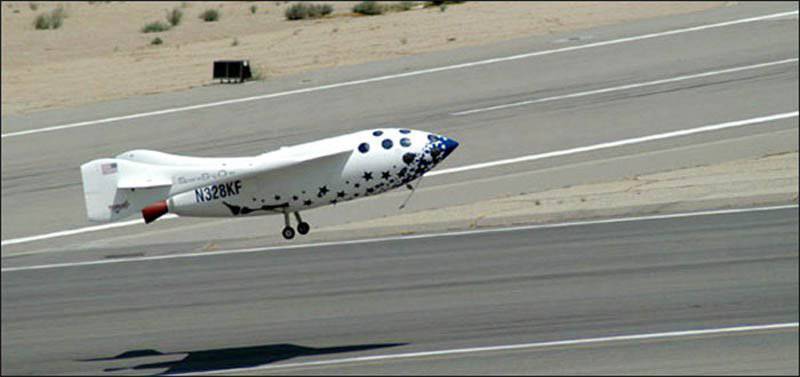
By this time, the qualified "fans" had no doubt that Rutan took the lead in this race. His rivals worked mainly on the simplest systems: a rocket with a vertical launch and landing with a parachute or paraglider. There were projects and more complex: from the start of the tug behind the Boeing-747 or from the suspension of the balloon; few planned horizontal takeoff and landing on the airfield or on the water. The Russian participants intended to use as a carrier for takeoff the high-altitude research aircraft МХNUMX Geophysics designed by Myasishchev Design Bureau, and for landing the same paraglider.
Rutan's scheme is more complicated and perfect. The “White Knight” is an exotic type of two-girder monoplane with a wing similar to the rear wing of the aforementioned “Proteus” - “return gull” - only the tips of the “Knight” are bent upwards. The T-shaped tail assembly is mounted on the side beams of a fancy shape, which are also carried by the wheels of the chassis. The aircraft has two jet engines; It is hardly necessary to say that its design - as, indeed, at the space stage is almost completely composite.
The very same Space Ship-1 resembles 1960's drawings, which depict spacecraft or hypersonic aircraft of the future. The fuselage - like a bullet or a drop with a sharp nose, round portholes are quite whimsically scattered around the front - the White Knight's fuselage looks almost the same. The very wide and short wings of the Space Thorn are carried on the outer extremities of the beam with vertical keels, and on the latter, one-sided beams are mounted — out of the fuselage — horizontal planes of feathering. The ship has a three-bearing wheel landing gear of conventional aircraft type.
As we see, the system has turned out again exclusively peculiar, Rutanovskaya. No one has ever built anything like flying to cosmic heights. And the engine is just as unique, the likes of which have not yet been encountered on manned spacecraft.
This engine is called a hybrid, because it can not be called either solid or liquid. The fact is that the fuel in this engine is solid, and the oxidizer is liquid; and these components, too, to put it mildly, are unconventional. Fuel is a kind of ... synthetic rubber (!), And the oxidant is nitrous oxide, known as "laughing gas."
What does this give? Immediately a lot. Firstly, the fact that the fuel has a solid state of aggregation, guarantees against the occurrence of a "detonating mixture" inside and around the apparatus in the event of an oxidizer leak. It also makes sense to say that the selected components do not ignite on their own even with direct contact - unlike, for example, from the proton fuel components, which, when combined, self-ignite. Secondly, a liquid oxidizer makes it possible to regulate the combustion process and, if necessary, to quickly interrupt it. Thirdly, solid fuel, which contains both fuel and oxidizer, is fundamentally explosive, requires special care in handling and special conditions during storage. And at the engine of Space Spike, the oxidizer and fuel are “spaced apart”. Fourthly, hydroxypolybutadiene (the so-called fuel) and nitrous oxide are non-toxic. Finally, the cost of such an engine turned out to be low.
Reliable, safe, cheap - just the perfect engine for mass manned flights!
Let it be a repetition, but I must say: again, Rutan got something unique in all its characteristics, from the constructive scheme to the perspective of practical use.
This perspective also contributes to the fact that the overload on any phase of the Space X-NUMX suborbital flight does not exceed 1 units - like on a “roller coaster”. Therefore, Bert believes that any healthy person can become a passenger of his ship, and this will not require any special training.
What does this very suborbital flight look like? "Space Sheep-1" is suspended under the fuselage of the "White Knight", which is trivial, as an aircraft, takes off from the strip of the airfield. Thanks to its long wings, the “Knight” climbs to a height of the order of 15 km - recall the “Proteus” with its record of lifting cargo to a height. It takes about an hour to climb (the “Knight” is not a racer, height is important for him), after which the suborbiter separates from the carrier, turns on the engine and at an angle of 84 degrees to the horizon rushes up.
Now everything is going fast. After a few minutes, the Space Ship reaches an 100 kilometer altitude. Three or four minutes, he, moving to the stage of decline, moves along a parabola in the vicinity of this height - this is the apotheosis of the journey. At this time, passengers are watching the stars in the black space and experiencing an unknown sensation of weightlessness. If the weather is clear, you can look at the Earth - here you can already write "Earth" with a capital letter ...
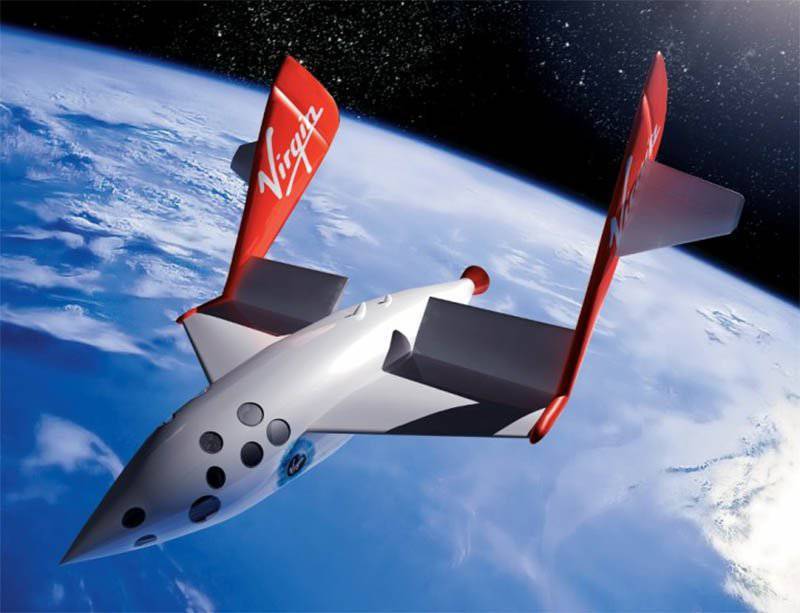
Then the descent begins, it takes about 20 minutes, takes place in the planning mode and ends with an airplane landing. The speed on the descent is of the order of three sounds, so a special system of thermal protection of the structure, similar to the well-known shuttle and “Buran” tiles, is not required. The descent is the most difficult stage of flight from the point of view of aerodynamics and control, maintaining a predetermined position of the device — approximately 70 ° to the direction of flight with the nose up — is provided by the wing design, the back half of which deviates and plays the role of a balancing flap. At an altitude of 24 kilometer, the wing assumes its original position, then the usual descent with the necessary maneuvering and landing takes place.
All this was first produced by 21 June 2004 of the year, controlled by the ship Michael Millville. And in October of the same year, after a couple of flights carried out in accordance with the rules of the competition, Bert Rutan, in all fairness - and not at all unexpectedly - became the owner of the "X-prize".
***
What next?
At the turn of the millennium, a new phrase has entered into the use of humanity - space tourism. Maybe, the founders and trustees of the X-Prize didn’t mean anything like that at first, but after 2001, information about events related to the competition began to be closely linked in the press with the theme of space tourism. This is understandable: the success of one of the competitors was promised by a cheap vehicle, without which the mass “export” of leisure non-professionals outside the atmosphere could not take place. The German expert Fabian Islingsfeld in 2003 and determined the task of the competition: to attract public attention, to achieve large investments and on the basis of the winning design to develop transport systems for suborbital or even orbital cruises, as well as for cheap satellite launch and ultrafast delivery of mail and passengers.
Now, the winning design is there, and its creator has seriously taken a great interest in the idea of commercial exploration of near-planet space as a new environment for extreme rest. The development of "Space Ship-1" will be "Space Ship-2" (Space Ship Two), for eight passengers. I found an investor; it is characteristic that they became the same Richard Branson, who, as we remember, financed the project of Steve Fossett with a single flight around the world. Apparently, the success of Global Flyer finally convinced him of the reliability of the business plans of Scaled Composites and the credibility of the plans of its chief designer.
And the chief designer is designing the next suborbiter, which will be much better than the previous one. Not only will it take four times as many passengers; these passengers will be provided with much more comfortable conditions: the pitch of the seats will be more, they can be tilted to a horizontal position, so that older people can more easily carry overloads. True, the toilet will not be in the new ship; but it will climb 135 – 140 kilometers, which will give tourists an extra minute and a half of space impressions.
Under the new plans, Sir Richard organized a special branch of his company - "Virgin Galaxy". He has already ordered a fleet of five eight-seat vehicles to Rutan, which is set to begin operation in 2008. And in 2007, Branson begins building the first commercial spaceport in the state of New Mexico - an agreement has already been reached with the authorities, and the spaceport project has been developed.
The construction of the space station should cost 225 million dollars, but the costs will pay off. Even then, in the middle of the expiring decade, soon after winning the "X-prize", but long before any definiteness appeared with the project of a new multi-seat orbiter, things went so that commercial success looked guaranteed. At the end of 2004, the president of Virgin Galaxy, Stephen Attenborough, said that around 38 thousands of people from 126 countries were already interested in the company. The first users of the ticket will cost 200 thousand dollars, and already more than seventy people have paid this money.
Here is what he said:
Over time, the price should be greatly reduced - Bert Rutan himself promised it at the hearings in the US Congress. The normal working mode of the project is 3, thousands of suborbital travelers a year, it is planned to enter it five years after the start of operation.
By the way, the price of hypothetical tickets from competitors Rutan on the "X-prize", while they were still in the mood to talk about it, reached 750 thousand dollars.
Space Sheep-2 and a private spaceport in the state of New Mexico are not the only practical consequences of the unique designer’s triumph. It must be assumed that the "Space Ship-1" will remain only a prototype of a larger ship; but the "White Knight" found a permanent job. According to a NASA representative, Michael Bracus, his department decided to use this high-altitude aircraft, inexpensive, sufficiently lifting and effective, to deliver the X-37В research hypersonic device to the starting height during its atmospheric testing.
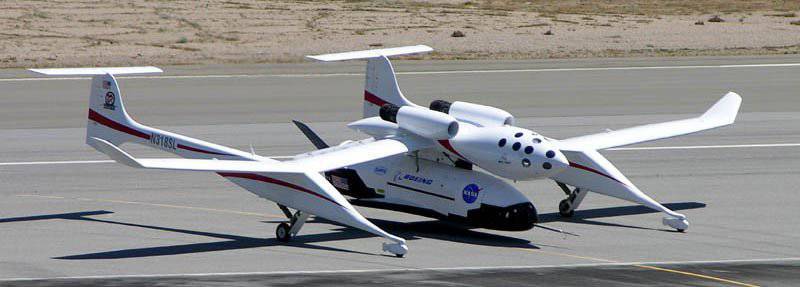
And what about Bert Rutan himself? They write that after the completion of the work on “Space Ship-2” he is going to take a break in the design and deal with the commercial side of the project. I wonder if it will be possible for a person who has created 30 models of aircraft for 30 years - and what models! And then the X-Prize continued: the American entrepreneur Robert Bigelow is already planning to pay 50 million dollars to a private company, which will be able to build an apparatus without state participation, capable of reaching a stable near-earth orbit. Did the great Bert stay away from such a thing?
Honestly, I can not believe ...
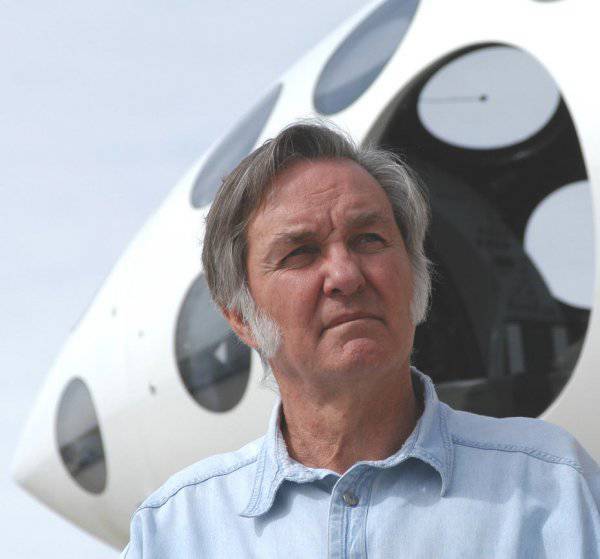
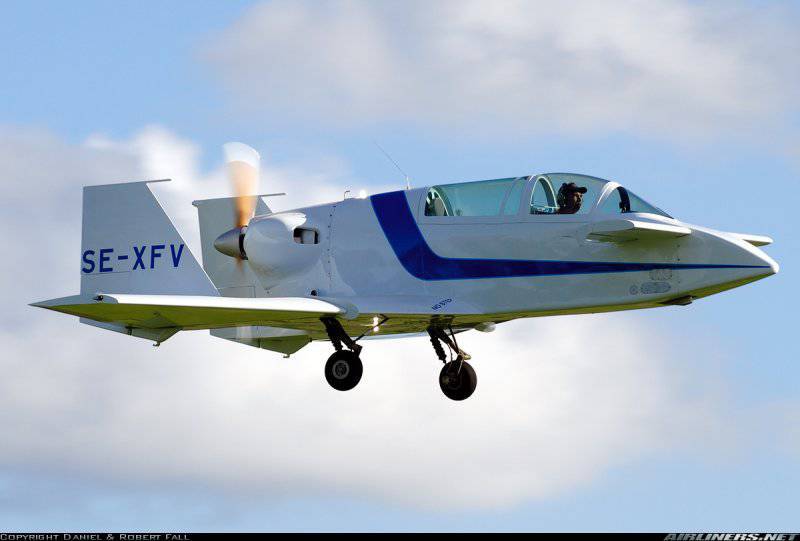
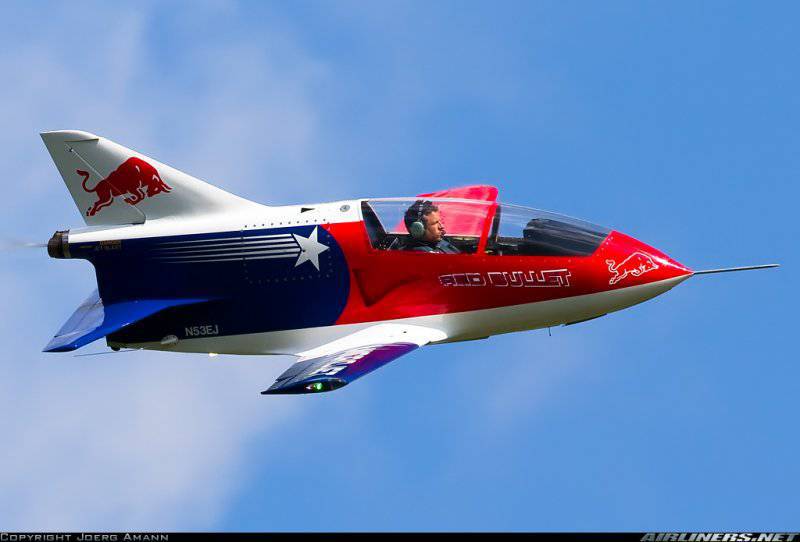
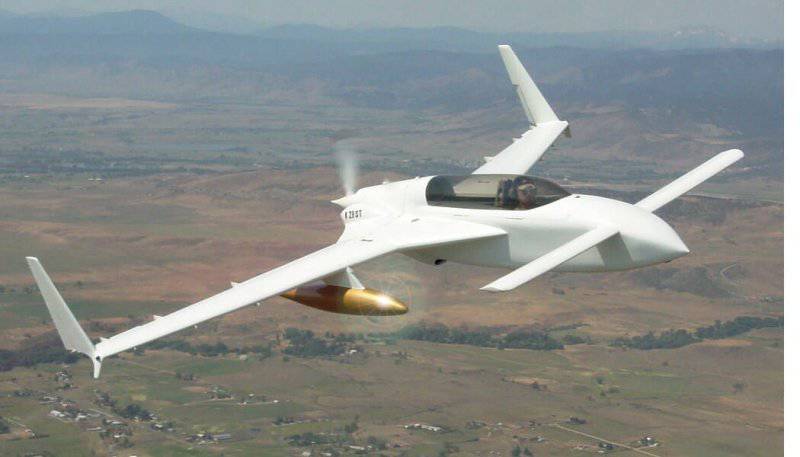
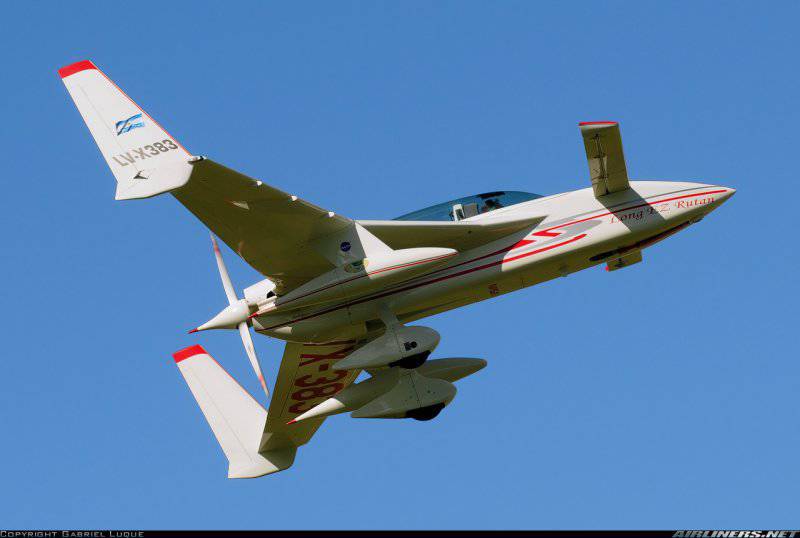
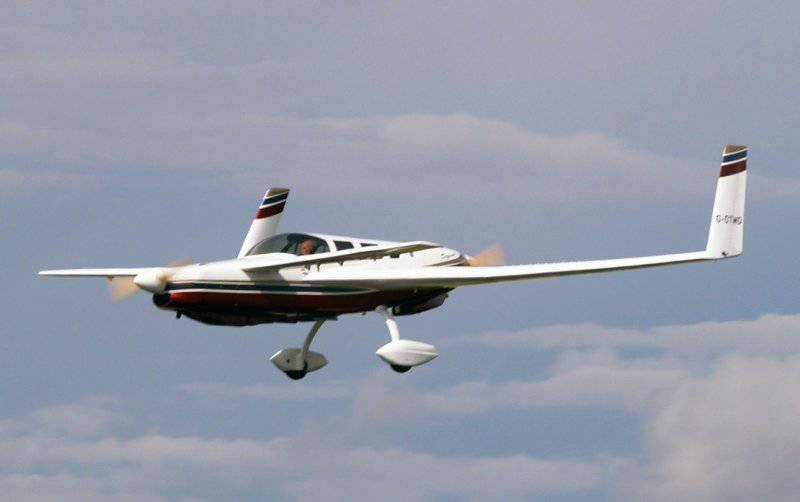
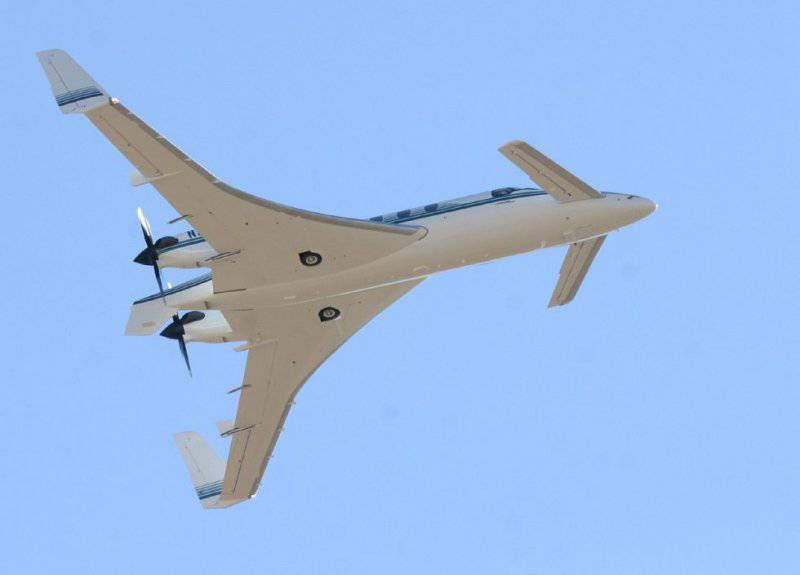
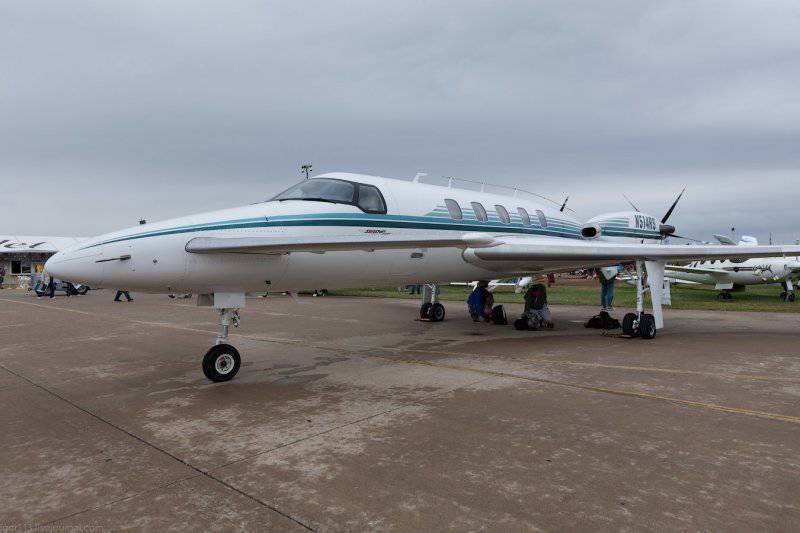
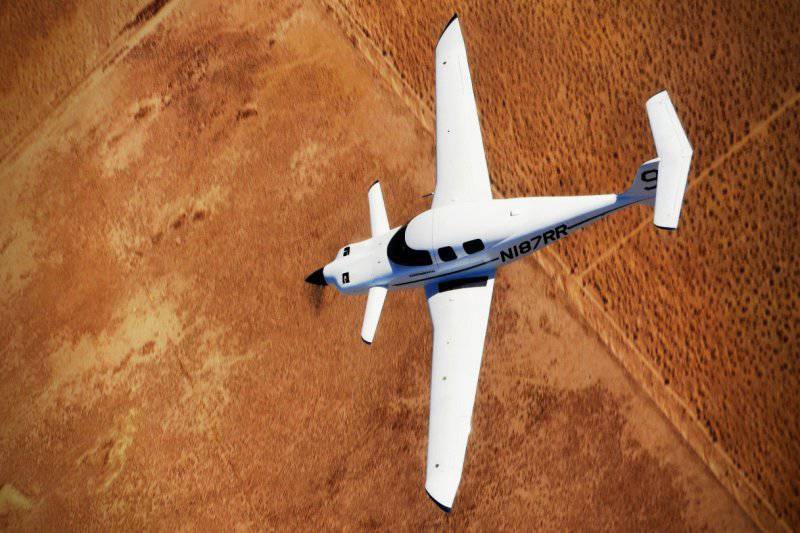
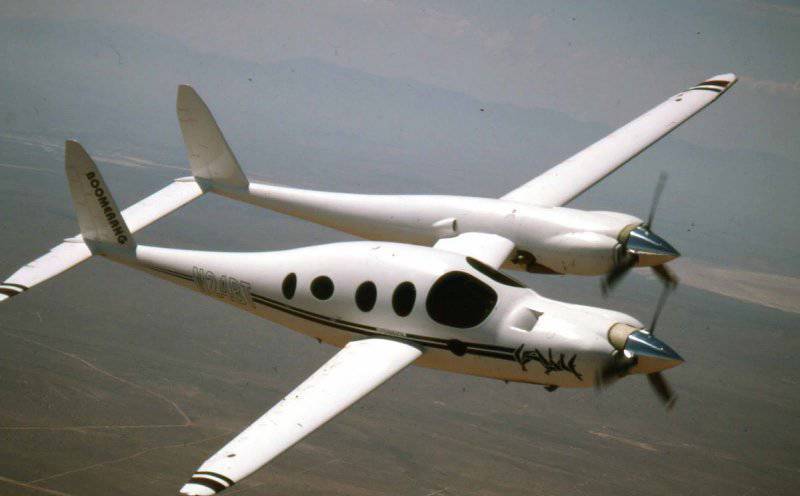
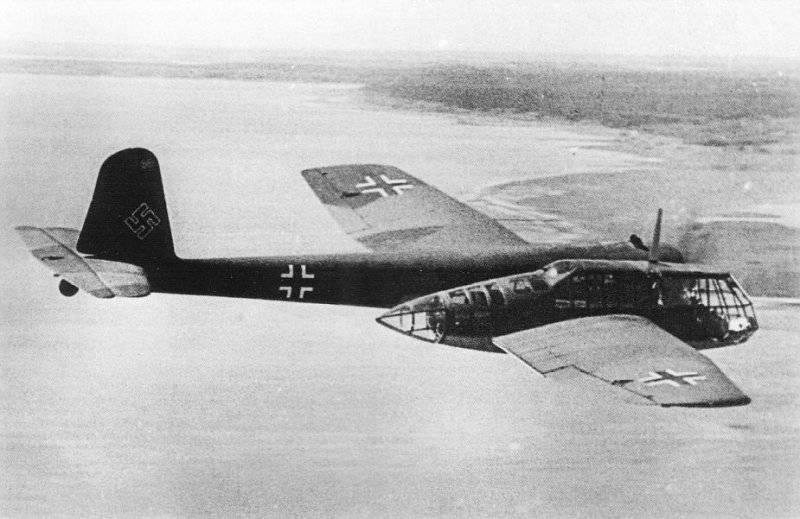

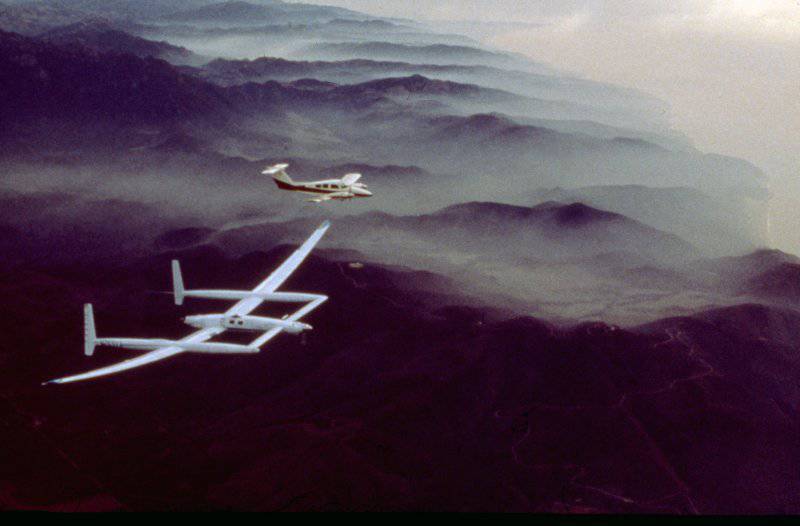
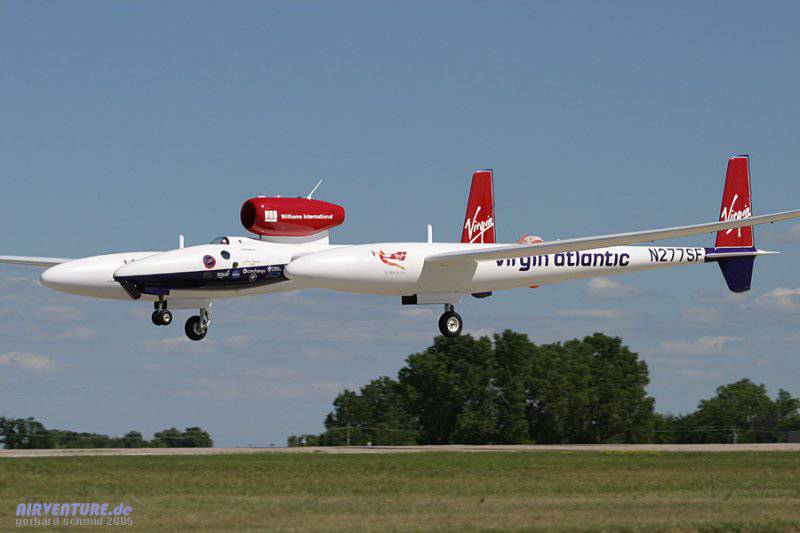
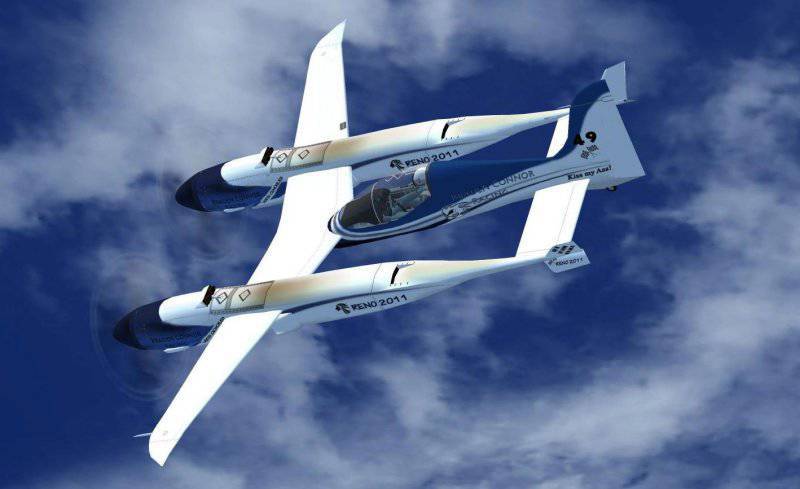
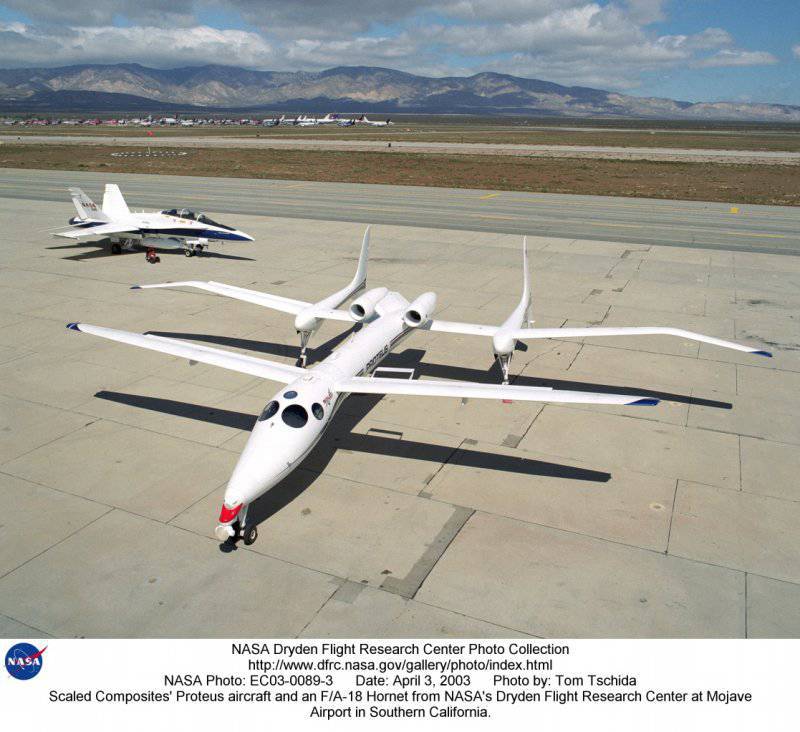

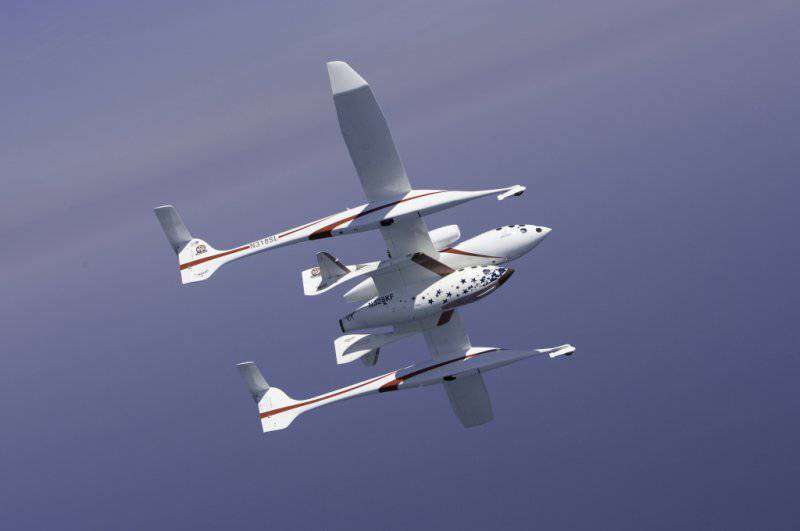
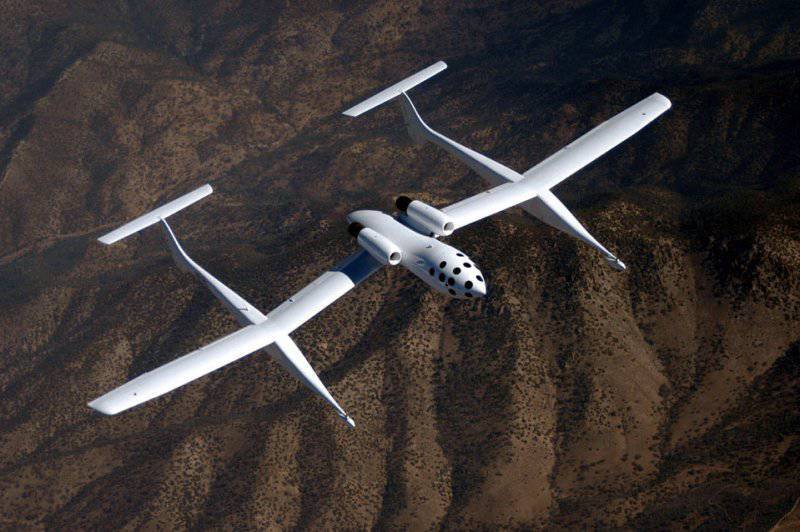
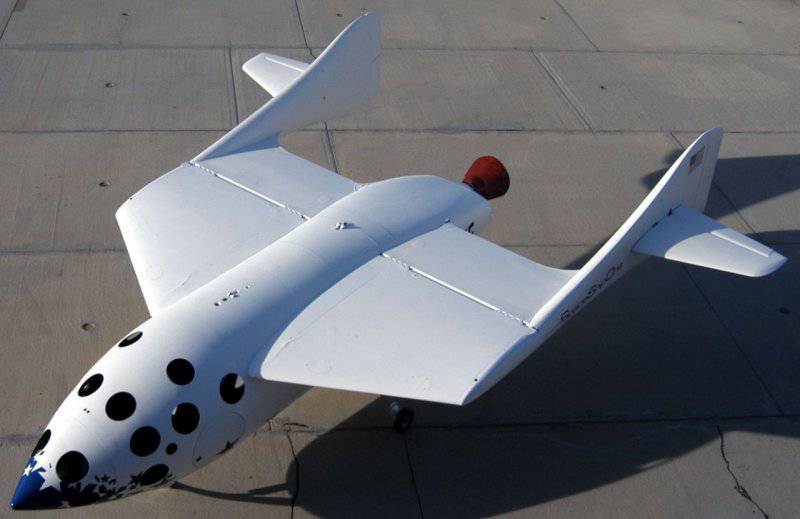
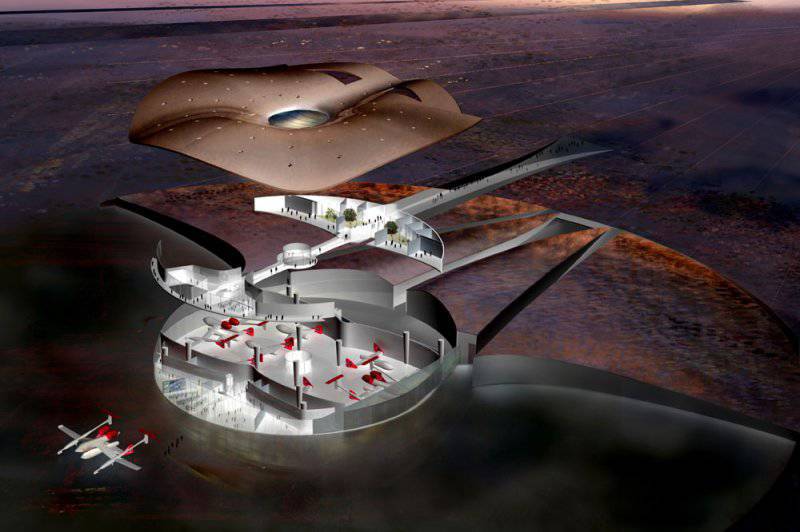

Information